Result
1 July 2019 Kabul attack

10 August 2015 Kabul suicide bombing
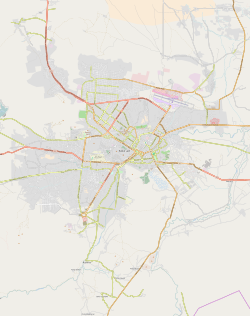
10 August 2015 Kabul suicide bombing

101 California Street shooting
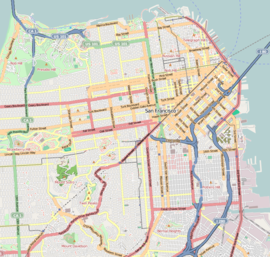
101 California Street shooting
14/02/2022 16:30:57The 101 California Street Shooting was a mass shooting on July 1, 1993, in San Francisco, California. The killings sparked a number of legal and legislative actions that were precursors to the Violent Crime Control and Law Enforcement Act, H.R. 3355, 103rd Congress. The Act took effect in 1994 and expired in September 2004 after the expiration of a sunset provision. At the time, the incident was the deadliest mass shooting in the Bay Area's history, being surpassed 28 years later by the 2021 San Jose shooting.
1033 Fez massacre

1033 Fez massacre
20/02/2022 14:38:37In 1033, following their conquest of the city from the Maghrawa tribe, the forces of Tamim, chief of the Zenata Berber Banu Ifran tribe, perpetrated a massacre of Jews in Fez in an anti-Jewish pogrom. The city of Fez in Morocco had been contested between the Zenata Berber tribes of Miknasa, Maghrawa and Banu Ifran for the previous half century, in the aftermath of the fall of the Idrisid dynasty.
Tamim's forces killed over six thousand Jews, appropriated their belongings, and captured the Jewish women of the city. The killings took place in the month of Jumaada al-Akhir 424 AH (May–June 1033 AD). The killings have been called a "pogrom" by some recent writers. Sometime in the period 1038-1040 the Maghrawa tribe retook Fez, forcing Tamīm to flee to Salé.
...11 June 2013 Kabul bombing

17 August 2019 Kabul bombing

17 September 2019 Afghanistan bombings

1740 Batavia massacre

1740 Batavia massacre
20/02/2022 14:39:14The 1740 Batavia massacre (Dutch: Chinezenmoord, lit. 'Murder of the Chinese'; French: Meurtre des Chinois, lit. 'Murder of the Chinese'; Indonesian: Geger Pacinan, lit. 'Chinatown Tumult') was a massacre in which Javanese people and soldiers of the VOC killed ethnic Chinese residents of the port city of Batavia (present-day Jakarta) in the Dutch East Indies. The violence in the city lasted from 9 October 1740 until 22 October, with minor skirmishes outside the walls continuing late into November that year. Historians have estimated that at least 10,000 ethnic Chinese were massacred; just 600 to 3,000 are believed to have survived.
...1804 Haiti massacre

1804 Haiti massacre
20/02/2022 14:39:34The 1804 Haiti massacre was carried out against the French population and French Creoles (or Franco-Haitians) remaining in Haiti following the Haitian Revolution, by soldiers, mostly former slaves, under orders from Jean-Jacques Dessalines. He had decreed that all suspected of conspiring in the acts of the expelled army should be put to death. From early January 1804 until 22 April 1804, squads of soldiers moved from house to house throughout Haiti, torturing and killing entire families. Eyewitness accounts of the massacre describe imprisonment and killings even of whites who had been friendly and sympathetic to the black population. Between 3,000 and 5,000 people were killed.
Nicholas A. Robins and Adam Jones describe the massacre as a "genocide of the subaltern", in which an oppressed group uses genocidal means to destroy their oppressors. Throughout the early-to-mid nineteenth century, the events of the massacre were well known in the United States. In addition, many refugees had come to the U.S. from Saint-Domingue, settling in New Orleans, Charleston, New York, Baltimore and other coastal cities. These events polarized Southern U.S. public opinion on the question of the abolition of slavery.
...1842 retreat from Kabul

1842 retreat from Kabul
20/02/2022 14:40:46The 1842 retreat from Kabul, also called the Massacre of Elphinstone's army, during the First Anglo-Afghan War, was the retreat of the British and East India Company forces from Kabul. An uprising in Kabul forced the then commander, Major-General William Elphinstone, to fall back to the British garrison at Jalalabad. As the army and its numerous dependents and camp followers began its march, it came under attack from Afghan tribesmen. Many of the column died of exposure, frostbite or starvation, or were killed during the fighting.
At the beginning of the conflict, British and East India Company forces had defeated the forces of Afghan Emir Dost Mohammad Barakzai and in 1839 occupied Kabul, restoring the former ruler, Shah Shujah Durrani, as emir. However a deteriorating situation made their position more and more precarious, until an uprising in Kabul forced Maj. Gen. Elphinstone to withdraw. To this end he negotiated an agreement with Wazir Akbar Khan, one of the sons of Dost Mohammad Barakzai, by which his army was to fall back to the British garrison at Jalalabad, more than 140 kilometres (90 mi) away. The Afghans launched numerous attacks against the column as it made slow progress through the winter snows of the Hindu Kush. In total the British army lost 4,500 troops, along with about 12,000 civilians: the latter comprising both the families of Indian and British soldiers, plus workmen, servants and other Indian camp followers. The final stand was made just outside a village called Gandamak on 13 January.
...1900 Amur anti-Chinese pogroms

1906 Atlanta race riot
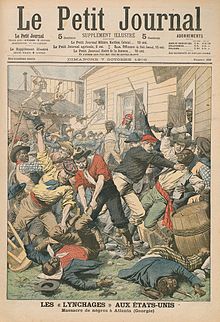
1906 Atlanta race riot
20/02/2022 14:42:14Violent attacks by armed mobs of White Americans against African Americans in Atlanta, Georgia, began on the evening of September 22, 1906, and lasted through September 24. The events were reported by newspapers around the world, including the French Le Petit Journal which described the "lynchings in the USA" and the "massacre of Negroes in Atlanta," the Scottish Aberdeen Press & Journal under the headline "Race Riots in Georgia," and the London Evening Standard under the headlines "Anti-Negro Riots" and "Outrages in Georgia." The final death toll of the conflict is unknown and disputed, but officially at least 25 African Americans and two whites died. Unofficial reports ranged from 10–100 black Americans killed during the massacre.[citation needed] According to the Atlanta History Center, some black Americans were hanged from lampposts; others were shot, beaten or stabbed to death. They were pulled from street cars and attacked on the street; white mobs invaded black neighborhoods, destroying homes and businesses.
...1929 Hebron massacre

1929 Hebron massacre
20/02/2022 14:42:47The Hebron massacre refers to the killing of sixty-seven or sixty-nine Jews on 24 August 1929 in Hebron, then part of Mandatory Palestine, by Arabs incited to violence by rumors that Jews were planning to seize control of the Temple Mount in Jerusalem. The event also left scores seriously wounded or maimed. Jewish homes were pillaged and synagogues were ransacked. Some of the 435 Jews who survived were hidden by local Arab families, although the extent of this phenomenon is debated. Soon after, all Hebron's Jews were evacuated by the British authorities. Many returned in 1931, but almost all were evacuated at the outbreak of the 1936–39 Arab revolt in Palestine. The massacre formed part of the 1929 Palestine riots, in which a total of 133 Jews and 110 Arabs were killed, the majority of the latter by British police and military, and brought the centuries-old Jewish presence in Hebron to an end.
The massacre, together with that of Jews in Safed, sent shock waves through Jewish communities in Palestine and around the world. It led to the re-organization and development of the Jewish paramilitary organization, the Haganah, which later became the nucleus of the Israel Defense Forces.
...1929 Palestine riots

1929 Palestine riots
20/02/2022 14:42:48The 1929 Palestine riots, Buraq Uprising (Arabic: ثورة البراق, Thawrat al-Buraq) or the Events of 1929 (Hebrew: מאורעות תרפ"ט, Meora'ot Tarpat, lit. Events of 5689 Anno Mundi), was a series of demonstrations and riots in late August 1929 in which a longstanding dispute between Muslims and Jews over access to the Western Wall in Jerusalem escalated into violence.
The riots took the form, for the most part, of attacks by Arabs on Jews accompanied by destruction of Jewish property. During the week of riots, from 23 to 29 August, 133 Jews were killed by Arabs, and 339 Jews were injured, most of whom were unarmed. There were 116 Arabs killed and at least 232 wounded, mostly by the Mandate police suppressing the riots. Around 20 Arabs were killed by Jewish attackers and indiscriminate British gunfire. After the riots, 174 Arabs and 109 Jews were charged with murder or attempted murder; around 40% of Arabs and 3% of Jews were subsequently convicted. During the riots, 17 Jewish communities were evacuated.
...1948 Palestinian exodus from Lydda and Ramle

1948 Palestinian exodus from Lydda and Ramle
20/02/2022 14:45:49The 1948 Palestinian exodus from Lydda and Ramle, also known as the Lydda Death March, was the expulsion of 50,000 to 70,000 Palestinian Arabs when Israeli troops captured the towns in July that year. The military action occurred within the context of the 1948 Arab–Israeli War. The two Arab towns, lying outside the area designated for a Jewish state in the UN Partition Plan of 1947, and inside the area set aside for an Arab state in Palestine, subsequently were transformed into predominantly Jewish areas in the new State of Israel, known as Lod and Ramla.
The exodus, constituting "the biggest expulsion of the war", took place at the end of a truce period, when fighting resumed, prompting Israel to try to improve its control over the Jerusalem road and its coastal route which were under pressure from the Jordanian Arab Legion, Egyptian and Palestinian forces. From the Israeli perspective, the conquest of the towns, designed, according to Benny Morris, "to induce civilian panic and flight", averted an Arab threat to Tel Aviv, thwarted an Arab Legion advance by clogging the roads with refugees – the Yiftah Brigade was ordered to strip them of "every watch, piece of jewelry, or money, or valuables" – to force the Arab Legion to assume an additional logistical burden with the arrival of masses of indigent refugees that would undermine its military capacities, and helped demoralise nearby Arab cities. On 10 July, Glubb Pasha ordered the defending Arab Legion troops to "make arrangements ... for a phony war". The next day, Ramle surrendered immediately, but the conquest of Lydda took longer and led to an unknown number of deaths; the Palestinian historian Aref al-Aref, the only scholar who tried to draw up a balance sheet for the Palestinian losses, estimated 426 Palestinians died in Lydda on 12 July, of which 176 in the mosque and 800 overall in the fighting. Israeli historian Benny Morris suggests up to 450 Palestinians and 9–10 Israeli soldiers died.
...1965 Highway 101 sniper attack

1965 Highway 101 sniper attack
14/02/2022 16:30:58Early on the Sunday morning of April 25, 1965, 16-year-old Michael Andrew Clark opened fire on cars traveling along U.S. Highway 101 just south of Orcutt, California from a nearby hilltop. Three people were killed and ten were wounded before Clark committed suicide upon arrival of police.
1982 Hama massacre

1982 Hama massacre
20/02/2022 14:48:32The Hama Massacre (Arabic: مجزرة حماة), or Hama Uprising, occurred in February 1982 when the Syrian Arab Army and the Defense Companies, under orders of the country's president Hafez al-Assad, besieged the town of Hama for 27 days in order to quell an uprising by the Muslim Brotherhood against al-Assad's government. The massacre, carried out by the Syrian Army under commanding General Rifaat al-Assad, effectively ended the campaign begun in 1976 by Sunni Muslim groups, including the Muslim Brotherhood, against the government.
Initial diplomatic reports from Western countries stated that 1,000 were killed. Subsequent estimates vary, with the lower estimates claiming that at least 2,000 Syrian citizens were killed, while others put the number at 20,000 (Robert Fisk) or 40,000 (Syrian Human Rights Committee). About 1,000 Syrian soldiers were killed during the operation, and large parts of the old city were destroyed. The attack has been described as one of the "deadliest acts by any Arab government against its own people in the modern Middle East". According to the Syrian opposition, the vast majority of the victims were civilians.
...1983 Lucanamarca massacre

1983 Lucanamarca massacre
20/02/2022 14:48:361984 anti-Sikh riots
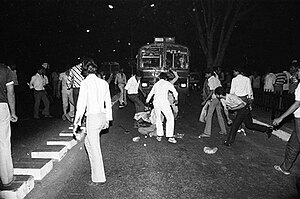
1984 anti-Sikh riots
20/02/2022 14:48:39The 1984 anti-Sikh riots, also known as the 1984 Sikh Massacre, was a series of organised pogroms against Sikhs in India following the assassination of Indira Gandhi by her Sikh bodyguards. Government estimates project that about 2,800 Sikhs were killed in Delhi and 3,350 nationwide, whilst independent sources estimate the number of deaths at about 8,000–17,000.
The assassination of Indira Gandhi itself had taken place shortly after she had ordered Operation Blue Star, a military action to secure the Harmandir Sahib Sikh temple complex in Amritsar, Punjab, in June 1984. The operation had resulted in a deadly battle with armed Sikh groups who were demanding greater rights and autonomy for Punjab. Sikhs worldwide had criticized the army action and many saw it as an assault on their religion and identity.
In the aftermath of the pogroms, the government reported that 20,000 had fled the city; the People's Union for Civil Liberties reported "at least" 1,000 displaced persons. The most-affected regions were the Sikh neighbourhoods of Delhi. Human rights organisations and newspapers across India believed that the massacre was organised. The collusion of political officials connected to the Indian National Congress in the violence and judicial failure to penalise the perpetrators alienated Sikhs and increased support for the Khalistan movement. The Akal Takht, Sikhism's governing body, considers the killings a genocide.
...1987 Lieyu massacre

1987 Lieyu massacre
20/02/2022 14:48:43The 1987 Lieyu massacre, also known as the March 7 Incident, Donggang Incident or Donggang Massacre, occurred on 7 March 1987 at Donggang Bay, Lieyu Island ("Lesser Kinmen" or "Little Quemoy"), Kinmen, Fujian, Republic of China. According to the diary of Superior-general Hau Pei-tsun, nineteen unarmed Vietnamese boat people were killed by the ROC military. There may have been more than nineteen deaths, containing several families of ethnical Chinese speaking minority.
1987 Lieyu massacre

1987 Lieyu massacre
20/02/2022 14:48:44The 1987 Lieyu massacre, also known as the March 7 Incident, Donggang Incident or Donggang Massacre, occurred on 7 March 1987 at Donggang Bay, Lieyu Island ("Lesser Kinmen" or "Little Quemoy"), Kinmen, Fujian, Republic of China. According to the diary of Superior-general Hau Pei-tsun, nineteen unarmed Vietnamese boat people were killed by the ROC military. There may have been more than nineteen deaths, containing several families of ethnical Chinese speaking minority.
1989 Tiananmen Square protests and massacre
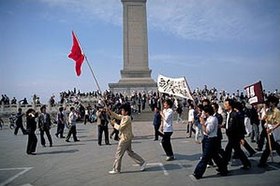
1989 Tiananmen Square protests and massacre
20/02/2022 14:48:52The Tiananmen Square protests, known as the June Fourth Incident (Chinese: 六四事件; pinyin: liùsì shìjiàn) in China, were student-led demonstrations held in Tiananmen Square, Beijing during 1989. In what is known as the Tiananmen Square Massacre (Chinese: 天安门大屠杀; pinyin: Tiān'ānmén dà túshā), troops armed with assault rifles and accompanied by tanks fired at the demonstrators and those trying to block the military's advance into Tiananmen Square. The protests started on 15 April and were forcibly suppressed on 4 June when the government declared martial law and sent the People's Liberation Army to occupy parts of central Beijing. Estimates of the death toll vary from several hundred to several thousand, with thousands more wounded. The popular national movement inspired by the Beijing protests is sometimes called the '89 Democracy Movement (Chinese: 八九民运; pinyin: Bājiǔ mínyùn) or the Tiananmen Square Incident (Chinese: 天安门事件; pinyin: Tiān'ānmén shìjiàn).
...1990 Batticaloa massacre
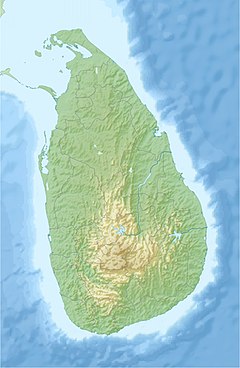
1990 Batticaloa massacre
20/02/2022 14:48:58The 1990 Batticaloa massacre, also known as the Sathurukondan massacre (Tamil: சத்துருக்கொண்டான் படுகொலை), was a massacre of at least 184 minority Sri Lankan Tamil refugees, including infants, from three villages in the Batticaloa District by the Sri Lankan Army on September 9, 1990. Although the government instituted two investigations, no one was ever charged.
1994 Mokokchung Massacre
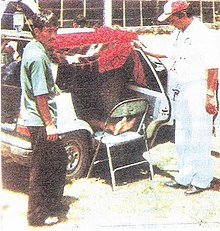
1994 Mokokchung Massacre
20/02/2022 14:50:27The 1994 Mokokchung Massacre also referred to as Ayatia Mokokchung by the citizens of the town, took place on December 27, 1994, when forces of the 10th Assam Rifles and the 12th Maratha Light Infantry of the Indian Army raided upon civilian populace of Nagaland's Mokokchung.
The incident lasted for about 2 hours and left 89 shops, 48 houses, 17 vehicles and 7 two-wheelers razed to ashes, excluding those destroyed by gunfire and shelling. 7 civilians were gunned down, another 5 burned alive including a child, several women raped and more than a dozen gone missing.
1995 Kohima Massacre

1995 Kohima Massacre
20/02/2022 14:50:29The 1995 Kohima Massacre, took place on March 5, 1995, when forces of the 16th Rashtriya Rifles of the Indian Army fired upon civilian populace while the convoy was traversing through Kohima, the capital city of Nagaland.
The incident was sparked off by a tyre burst from one of the convoy's own vehicle leading the armed troops to fire at civilians after mistaking the sound of the tyre bursting for a bomb attack.
2 and 5 September 2019 Kabul bombings

2001 Greyhound bus attack

2001 Greyhound bus attack
14/02/2022 16:30:59Igrić was born in 1972 in Slavonski Brod, Yugoslavia (now Croatia). During his late teenage years he trained as a locksmith in vocational school. He joined the Croatian army in 1991, when he was 19, and was discharged in 1993, after what the ambassador of Croatia, Ivan Grdešić, described as "violent behavior and substance abuse... he was connected with crimes in Croatia." When ethnic tensions began to flare during the mid-nineties he joined others in Croatia's "homeland war" of independence from Yugoslavia.
Igrić, a citizen of Croatia, entered the United States through the city of Miami, Florida during March 1999, on a 30-day transit visa. He overstayed the visa by two years, convincing US immigration officials he had relatives in Florida and New York. He worked in a restaurant in New York City before the Greyhound incident. Igrić had a long history of mental illness.
...2006 Qana airstrike
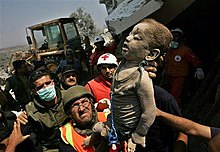
2006 Qana airstrike
20/02/2022 14:50:56The 2006 Qana airstrike (also referred to as the 2006 Qana massacre or the second Qana massacre) was an air strike carried out by the Israeli Air Force (IAF) on a three-story building in the small community of al-Khuraybah near the South Lebanese village of Qana on July 30, 2006, during the 2006 Lebanon War. 28 civilians were killed, of which 16 were children. Israel halted air strikes for 48 hours following the attack, amid increasing calls for a cease-fire in the conflict between Israel and Lebanon's Hezbollah guerrillas.
Initial media reports stated that more than 50 people, including 37 children, had died, although later reports revised this to a lower figure of 28, including 16 children, with 13 people reported missing. Residents dug through the rubble with their hands, searching for survivors as bodies were removed. Video broadcast by Arab TV showed the bloodied bodies of women and children who appeared to be wearing nightclothes.
The Israel Defence Forces (IDF), although it admitted striking the building, initially denied that the explosion that caused the mass deaths were the result of their attack. This was contested by Qana's residents, who said the building collapsed due to the Israeli bombing. According to the IDF, the bombing was an attempt to stop Katyusha rockets supposedly being fired by Hezbollah into northern Israel from the village over a two-week period and said residents were warned to leave. According to Human Rights Watch, international observers and journalists said there was no evidence the building served any military purpose. Lebanese Prime Minister Fouad Siniora accused Israel of war crimes and asked, "Why, we wonder, did they choose Qana yet again?", in reference to an artillery shelling carried out by Israeli forces that killed over 100 civilians at a UN compound 10 years before. Kofi Annan urged the United Nations Security Council to condemn the attack.
...